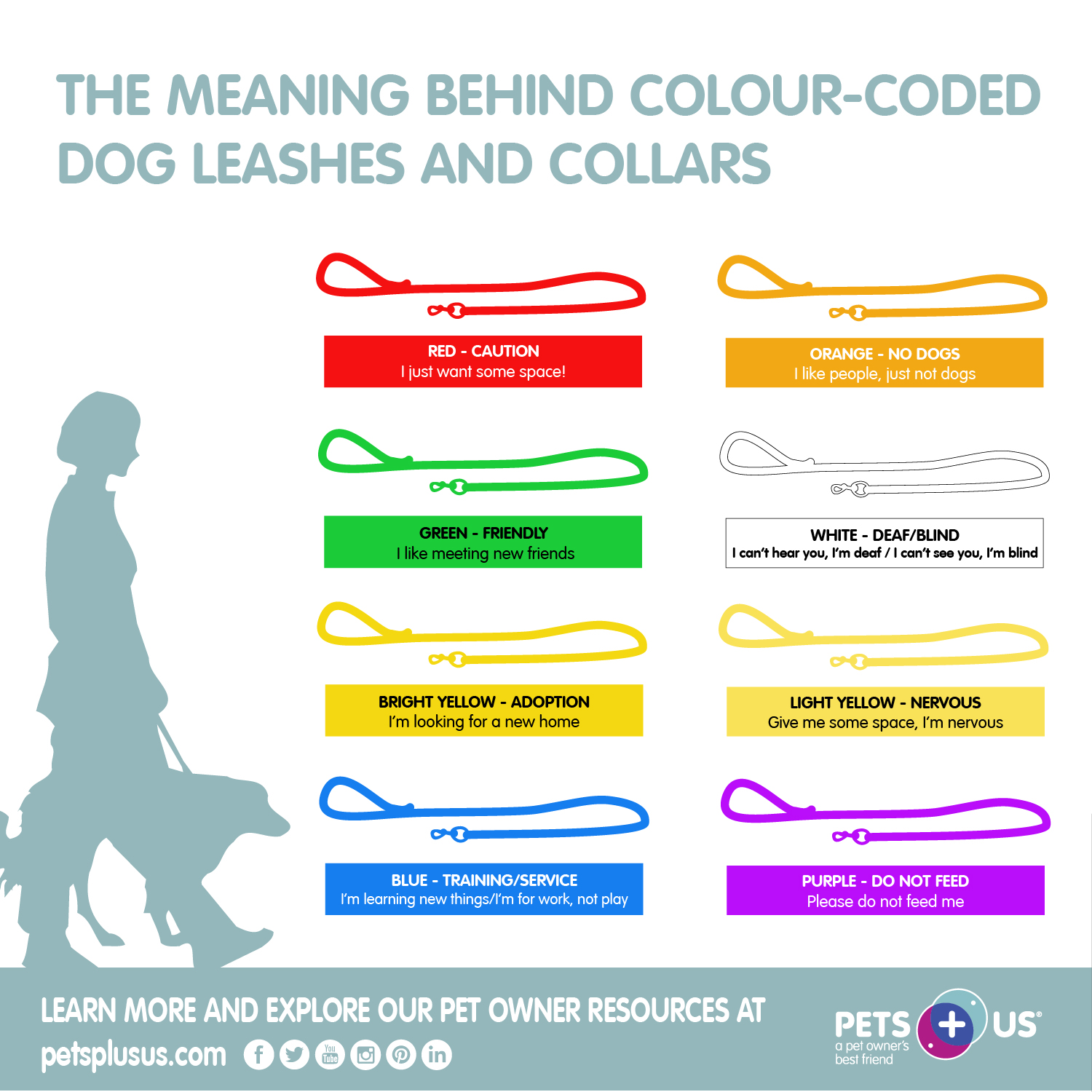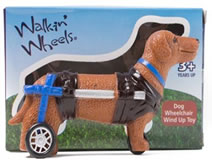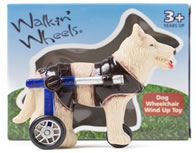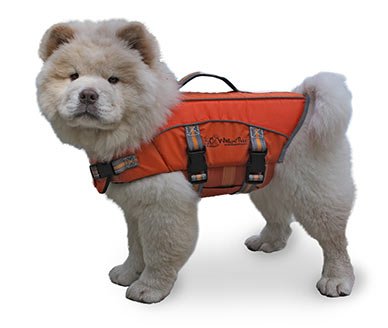Disabled Dog Social Interaction
One of the most difficult things to judge with a disabled dog is how much social interaction do they need? Are they getting enough? Too much? One thing I've noticed is that because dogs don't realize they are disabled, they will try and do everything they once did - even if they can't which may lead to frustration.
The obvious solution is to find a way that your disabled dog can socialize with other dogs (if he feels comfortable doing that). If you have other dogs in your household, don't isolate him. He will enjoy their company. On the other hand you may need to protect him from "the pack" or an over exhuberant or aggressive pack mate. A pack senses the disabled dog is not 100% and while they will often be exceedingly sweet and tender with the disabled dog, they may also decide to finish him off. This can especially be an issue with paraplegic, quadraplegic, blind and incontinent dogs. They give off smells of vulnerability and an opportunistic pack-mate may decide to 'move up' or let jealousy take control. It's important you watch for clues and are aware because the disabled dog cannot defend himself should the another dog attack. Only you will know the fine balance of your pack and what will work best. If you only have one or two other dogs, they may also be very protective and helpful, letting you know when the handicapped dog needs you. Dogs are amazing creatures, and their loyalty to their friends is very strong.
One of the ways we protected our disabled dog from other more opportunistic dogs was to put his x-pen 'safety zone' in the middle of everything and let the disabled dog (ours were pretty immobile) hang out in it. He can be nearby, yet be safe. Another way to let him socialize is the use of a dog wheelchair. A dog is much more vulnerable if down. A cart puts him on more equal ground with other dogs. It also facilitates being able to sniff to his heart's content - and for the boys, to pee on trees and bushes - something immensely important to their self-esteem apparently! .
Dealing with Anxiety and Depression in Dogs with Disabilities
Often a dog that was quite outgoing will become depressed and anxious when they cannot be mobile. Some dogs are fine with sitting at your feet all day, but some do have panic attacks when you leave the house or even leave the room. The key is not to be too over solicious because you'll just make the problem worse. When Shadow no longer had the use of his back legs, he would 'yell' to us when we'd leave the room. It became quite evident he was having a form of separation anxiety caused by his disability. Dogs that are very independent (as he was) can become fearful and anxious just as much as a formerly shy dog. One way to deal with this is to leave something of yours (a piece of clothing?) with him and tell him matter-of-factly you'll be back. It can get pretty nerve wracking when they do this and I would love to hear other's suggestions of what worked for them. It is quite common for disabled dogs to need to be near you. Where they previously would get up and come to you for attention, now they can't - so instead they bark, yell, whine or make other noises to make sure you notice them. It can be downright exhausting for the disabled dog's owner - being at their beck and call 24/7- so you need to make some boundaries. Let him know he will be ok, and you WILL be back. I'm seeing this right now with Jazzy who is deaf - she will yell endlessly for you to come and help her when previously she'd have just gone and laid down and patiently waited. So what we do is humor her as much as possible (sometimes it's hard because she IS so demanding) and sometimes she just has to squalk and wait. Boundaries! Sometimes the solution is something simple - a wheelchair for a paralyzed dog - hand signals to convey your wishes with a deaf dog...but sometimes you have to really hunt to find a workable solution.
Do you know what the Yellow Dog Project is?
If your dog is just elderly, aggressive or shy, or handicapped but still mobile enough to go for walks, this is a great idea.
The Yellow Dog Project is a nonprofit organization that is a global effort to help raise awareness and education around dogs that require a little extra distance upon approaching. Does this mean that the dog is aggressive or mean? No, there are numerous reasons why a dog may have a yellow ribbon tied on it's leash. It may mean the dog is new with the handler, is under medical care, or in foster care for instance.
The purpose of this project is to assist with the proper techniques to approach a dog. Children have a lot of energy and often to run up and pet a dog. Not all dogs understand this and can become fearful. With proper education, all parties are put in a less stressful environment, which in turn reduces opportunities for an unforeseen accident.
While many dogs are friendly, there are others that need space either all the time or at least as they are warming up to new people or dogs. The yellow ribbon can signify many things. This project has been expanded to include other reasons for wearing a yellow ribbon, and other color leashes/ribbons.
- A dog is in training and doesn’t want to be disturbed.
- A dog has health issues.
- A dog is frightened outdoors.
- A dog may not like other dogs or unfamiliar people.
- PINK - Do not feed
- GREEN - Friendly
- RED - Caution
- ORANGE - Not dog friendly
- BRIGHT YELLOW - Awaiting Adoption
- LIGHT YELLOW - Nervous
- BLUE - In training or working
- WHITE - Deaf or Blind
About the Yellow Dog Project
This project has been great for dogs that are iffy around people or other dogs. It gives them space when out and about. Yet, most disabled dogs would love the company of others and particularly their owners. Ideally you want his "space" to be near the busiest areas of the house (unless he is recouperating from surgery or some other temporary disability that requires quiet and rest). A disabled dog will enjoy watching the comings and goings, love the attention, and will do much better than a dog isolated in a spare bedroom with no interaction. Even dogs that can't get around in wheelchairs enjoy toys and your loving attention. These guys are having ablast so of course disabled dogs can have friends and enjoy interaction!





